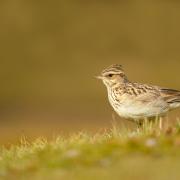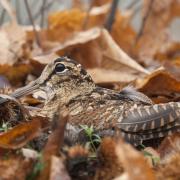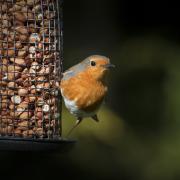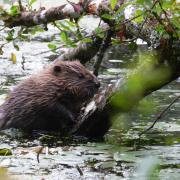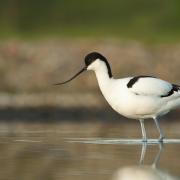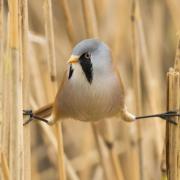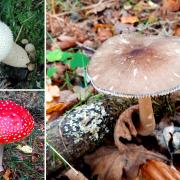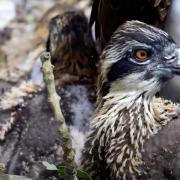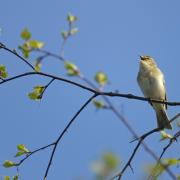Ratty's return! Water vole numbers are in an alarming decline but as Hester Lacey discovers Dorset's population are holding their own and in some cases making a come back
Hester Lacey discovers Dorset’s population of water voles are holding their own
Ratty's return! Water vole numbers are in an alarming decline but as Hester Lacey discovers Dorset’s population are holding their own and in some cases making a come back
T he most famous water vole ever is probably ‘Ratty’ in the book Wind in the Willows. Brave, loyal and a steadfast friend to the bumbling Moley, he is one of the book’s most endearing characters. When Kenneth Grahame wrote this children’s classic in 1908, the water vole was a common sight in Britain, but sadly this is no longer the case. The Mammal Society has described the water vole as Britain’s fastest-declining mammal and it has disappeared from 94% of the sites where it was once found.The reason for the dramatic fall in numbers is a combination of habitat loss and predation by American mink, a non-native species which has spread across much of Britain. Mink are strong swimmers and can chase the water voles into their burrows, normally a sanctuary from enemies. “It’s a double whammy problem,” says Dr Rachel Janes, Dorset Wildlife Trust’s Rivers and Wetlands Conservation Officer. “But, while mink have now become completely naturalised in every river catchment across Dorset, we’ve actually got quite good water vole populations.”The reason for Dorset’s water voles holding their own is, says Rachel, mainly down to the preservation of the landscapes that support them. “We’re bucking the national trend because our habitat is actually pretty good.” Water voles can be driven out when river banks are overgrazed; when bank structures are trampled, there is nowhere for the voles to burrow and the vegetation isn’t as diverse. Draining the ditches where they like to live also makes them homeless. “In Dorset we have good river and ditch systems and we have also used quite traditional river keeping techniques over the years,” says Rachel. “Supportive landowners and careful management are key to the survival of the water vole and the vast majority of river bank owners welcome the Trust’s efforts to monitor and support water vole populations.”
Water voles are around the same size as brown rats but far more attractive, with blunter faces, neater ears and furry tails
While water voles are also known as water rats (hence the name Ratty) they are very different from the brown rat. The biggest of the British voles, larger than their field vole and bank vole cousins, water voles are around the same size as brown rats but far more attractive, with blunter faces, neater ears and furry tails. They live near ditches or slow-flowing rivers and streams, ideally with earth banks to burrow into and not too much shade, which restricts the growth of the vegetation they live on. They are active in the daytime, and, says Rachel, they are not particularly shy. “They can often be seen swimming or sitting and crunching on a juicy reed stem on the bank. You might even hear them diving into the water. They make a characteristic plop as they go in.”In Dorset there are water voles around Gillingham and the lower Frome at Wool and Wareham. Burrows can be seen at Dorset Wildlife Trust’s Tadnoll and Winfrith reserves, the RSPB reserves at Radipole Lake and Lodmoor also have strong populations. The Bride and Brit valleys along with Brownsea and Abbotsbury are other good places to go vole-spotting.Signs of water vole activity include dropped sections of stem that measure around 10 centimetres and have a sharp 45-degree angle. The other give away are water vole droppings. “They scent-mark their territory with lozenge-shaped green droppings about a centimetre long,” says Rachel. “They also make extensive burrows in banks, some with underwater entrances, side entrances, escape hatches and chambers for breeding and eating. The holes are the size of a small fist. And they leave very starry footprints with a right angle between the first and second toes.”In the past, water vole surveying in Dorset has received national funding, but this year resources are limited so Dorset Wildlife Trust are looking for volunteers. “We’re aiming to survey about 100 sites,” says Rachel. “It would be fantastic if any readers could report their sightings.”Water voles are a key indicator species, as Rachel explains. “They are purely vegetarian and feed on over 220 plants, including flag iris, brook lime and water mint, so their presence indicates that the plants in any water where they live are really healthy – and thus so are the invertebrates that also depend on the plants and the fish that eat the vertebrates. Water voles reflect the overall health of the waterway.” Conservationists, she adds, are always glad to see signs of water voles. “That little olive-green dropping suggests that the extremely complex web of living creatures is OK. If you know they’re there you can breathe a sigh of relief.”
Report your water vole sightings to Rachel Janes on rjanes@dorsetwildlifetrust.org.uk







